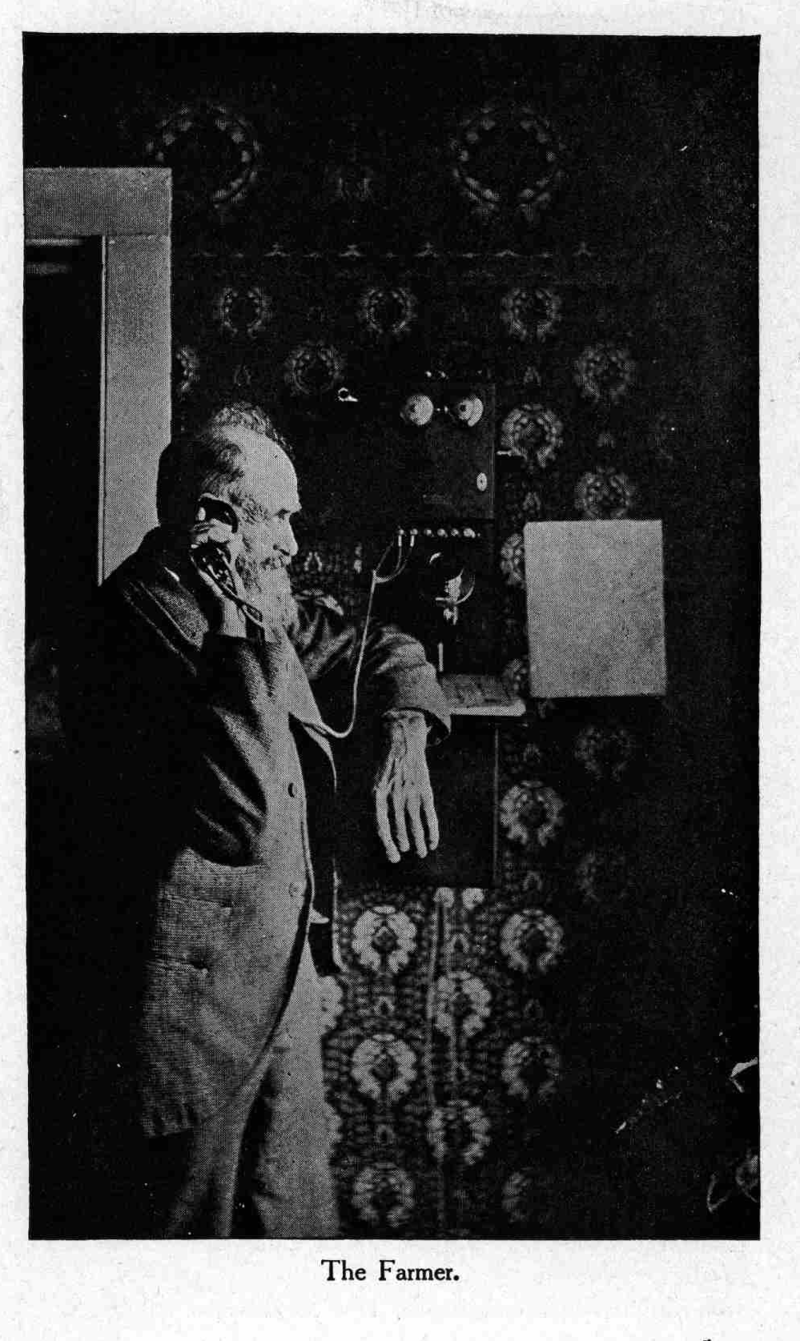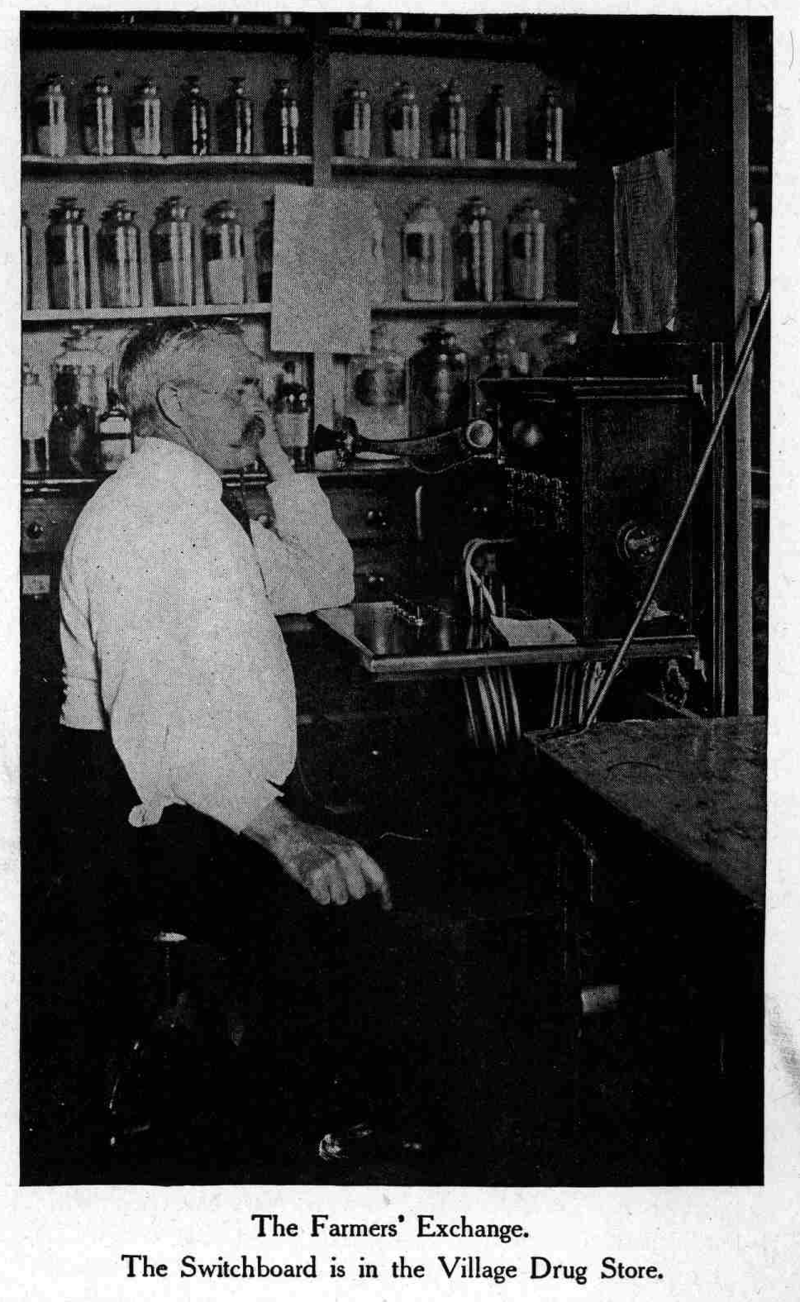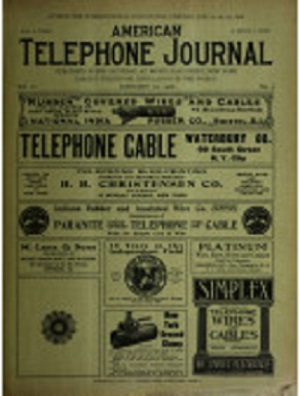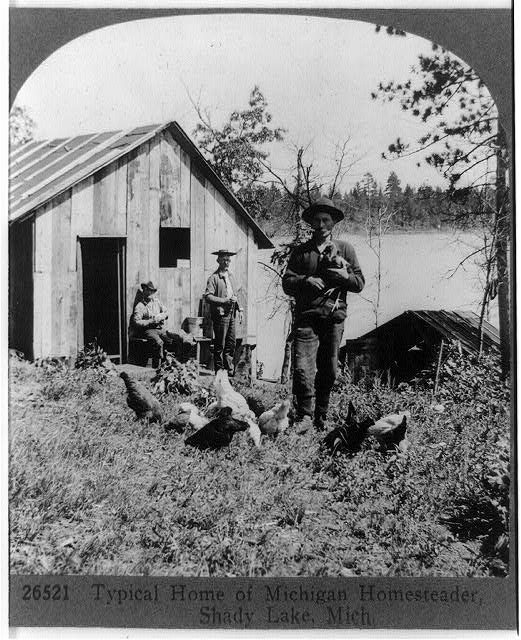How Wild West Farmers Arranged Barbed Wire Telephone Network

It is hard to imagine how sometimes two completely distant events can, by connecting together, drastically change the life realities of hundreds of thousands of people. The right to such cases can be attributed to the invention of barbed wire in 1874 and the creation of a telephone set by Alexander Bell, two years later.
So, in the courtyard stood in 1874, and the entire western part of the United States consisted of many farms with vast territories, which were located from each other at a distance of many kilometers.

American estates like this one were located a few kilometers from their closest neighbors.
Cattle that grazed in the territories of these huge farms, constantly strived to go beyond the territory and walk on pastures of the nearest neighbors. At that time, ordinary wire was used for the fence and animals, often without any problems, overcame this barrier. Everything changed when Joseph Farwell Glead received a patent for the manufacture of barbed wire.
')

New production technologies made barbed wire cheap and affordable, which affected its rapid spread. Due to this, already by 1880 about a million kilometers of barbed wire fences were produced and installed in the Old West.
Two years later, after American farmers began to envelop their own lands with a prickly fence, inventor Alexander Graham Bell patents his own revolutionary invention - a telephone set. The device created a real sensation and completely reversed the possibility of people to communicate at a distance. After all, now everyone could pick up a telephone receiver and talk to a person located many kilometers away. Then the only option of remote communication was the telegraph, requiring the presence of a qualified operator, and not allowing to transmit such amount of information as a telephone, and even with such facilities.

1877 illustration shows Bell magnet system
Naturally, telephone networks began to grow at a rapid pace. But telephone companies paid their attention only to large cities, bypassing the sparsely populated areas of the American West, because they did not see economic benefits in deploying hundreds of kilometers of telephone cable. As a result, farmers simply had no opportunity to connect to modern, at that time, communication systems.
However, the phone companies clearly underestimated the innovative and entrepreneurial spirit of these men and women. An unknown genius discovered that if you connect two Sears or Monkey Ward telephones to the top wire on a barbed wire barrier, you can talk as easily as between two “city” telephones connected via an operator switchboard. The huge networks of barbed wire, stretching for many kilometers along the farms, in an instant became an excellent tool for creating your own communication network. Telephones with the help of a piece of ordinary smooth wire began to be connected to barbed fences, using the latter as trunk lines.

This 1904 brochure from Bell Telephone Company urged farmers to buy a telephone in order to stay abreast of weather forecasts or changes in cotton prices.
The technology was very simple. Steel wire is a good conductor of electric current, which allowed to carry out a telephone signal. But initially the barbed wire was fastened to the poles with metal clips that grounded the wire and made it useless as a conductor. Therefore, farmers chose a single wire fence and insulated it for use as a telephone cable.
The main difficulty in building such a telephone network was to connect the wires between adjacent prickly fences or to create a contact at the gaps in the fencing itself. To overcome the gap between neighboring fences, insulated cable was laid underground. In some cases, barbed wire was also used for this connection. Usually, the wires are connected by a good twist. However, soldering worked best for the connections, of course.
These were single-wire systems, where the earth served as one of the conductors, since two-wire systems were much more expensive. Grounding was performed with a two-meter galvanized electrode driven into the ground.
A significant problem was isolation. Special porcelain knobs worked well as insulators on wooden racks to prevent short circuits of wires in the rain. When laying wires to the house, farmers often carried them through porcelain tubes. For suspension wires used any suitable means for that. It could be leather straps folded around the wire and nailed to the racks, neck of whiskey bottles, bottles, corn cobs, and short straps holding the telephone wires on the pole.
Connecting to the line cost farmers $ 25. The package included a telephone with two dry batteries, a magneto grounding rod, porcelain caps and tubes, plus 3 meters of wires for internal wiring and more than 15 meters to connect to the line outside the room.
This local network did not have a regular subscription fee, although members of the cooperative paid a few dollars a year for routine maintenance and replacement of dry batteries (instead of which they sometimes used old car batteries). And of course, no one paid any phone bills.
The telephone set was connected with a usual smooth wire to a prickly fence and the signal went along the entire length of the barbed wire either to the switchboard or to other houses. In some cases, up to twenty phones were combined into one network. When the call was made, all the telephone sets worked simultaneously, which created some confusion. As a result, the farming communities have agreed among themselves a special system of codes to recognize for whom the call is intended.
This kind of telephone communication significantly changed the way of life in remote areas of the United States. The advantage of the network was not how it connected farmers to the outside world, but how it connected farms that were distant from each other. In addition, they were needed and, if necessary, to call emergency medical care.
In addition, the telephone network on the barbed wire was for farmers and an opportunity to have a good time. For example, music concerts were broadcast over the telephone network. The caller sang or played on any musical instrument, and the rest could listen to him simultaneously from different parts of the region. By means of phone transferred news and weather forecast. For such cases, a special code was also coined.
Emma Marble, a young woman who lived in Texas in 1899, recalled how the telephone line brought together neighbors living alone at a fair distance from each other.
“The idea was that we would only respond when our code sounded, but every time the bell rang, every woman on the line rushed to the receiver, ” she recalled .
Often, the cause of the expansion of the telephone network was an accident. So one day, in a remote corner of Texas, a train hit two expensive thoroughbred bulls. In order to compensate for the damage, the railway company allowed local residents to use barbed wire stretched along the railway as a telephone line.

In some communities, the switch connected the rural line to the outside world
Solitude and heavy daily physical labor affected the mental health of farmers, which sometimes led to a condition that psychotherapists call clinical depression in modern times. As one of the farmers, whose lands comprised an area of 160 acres (approximately 64 hectares) recalls, the news and phone gossip was a “ray of light in a dark kingdom” of social exclusion. At the same time, participating in a telephone conversation, even with one person, the speaker felt that he was part of a large group of people. It happened that from time to time someone would interrupt the conversation and the standard phrase “Get off the line!” Became the answer to it.
At that time, in the states, housewives were monitored by a special government inspector who checked how women were monitoring housing on farms. The telephone in such cases repeatedly warned women about the unexpected visit of the inspector. On his arrival, the farmers reported to each other when the inspector crossed the threshold of the first house.

Some rural homes had rudimentary copper telephone lines, instead of relying on steel barbed wire.
Naturally, such a self-made line of communication was not ideal. The wires were of disgusting quality, even if the “correct” copper wire was used. What can we say about the "thorn"! The barbed wire itself was heavy and it became even heavier during the rain. All this had a negative effect on the signal, because of which the sound in the handset had a lot of noise.
Lines of barbed wire are often damaged. Thus, the famous American magazine The American Telephone Journal in 1908 described how a private line of an American farmer constantly suffered from the games of local boys, who then trampled the wire into the ground, or even tore it up.

The same issue of The American Telephone Journal
Another Texas resident recalled that her barbed wire worked only in dry weather, and when the mesquite spread in these parts grew and touched the wire, the line buzzed heavily.

Photography of michigan farmers
Often cattle became the cause of a telephone collapse. Thus, in 1886, Telephony described a case in which a herd of cows broke a wire fence and effectively cut off several farms from communication with the outside world.
“It goes without saying that since then I have been biased towards telephone lines made from barbed wire. In our area it often happened that such problems with the work of the telephone line cost human life, ”the words of one of the local residents are quoted in the magazine.
However, all the above inconveniences were not a serious obstacle for people in rural America, because even such a wild connection by today's standards was for them the most attractive option for communication with the outside world. And this trend has continued in the western states for more than a decade. With the help of barbed wire, farmers actively mastered and used telephone communications from the early 1900s to the 1920s. Many of the more than 6,000 small independent companies operating in 1902 were farmers. In 1907, about 18,000 cooperatives in 10 states in the Midwest served 1.5 million rural households. By 1912, more farms than non-farm households had telephones, and in 1924 Iowa led the country in terms of the number of telephones per capita.
In their heyday, these telephone networks were served by approximately 3 million people, that is, more than the official Bell telephone system. By the 20s, many rural areas received an official telephone connection, but in spite of this, the old networks based on barbed wire in some areas persisted until the forties of the 19th century.
The telephone connection created by American farmers with the help of barbed wire looked more like the social networks of the modern Internet than the telephony we used to. And from this point of view, we can assume that the Internet in the user sense and social groups originated there, in conditions of almost the Wild West, and a hundred years later, they simply changed the technology.
Source: https://habr.com/ru/post/410779/
All Articles